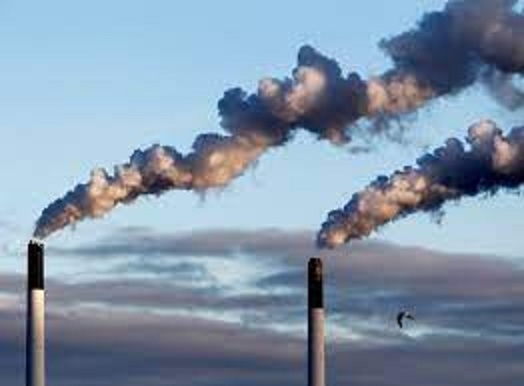- Conducted on decarbonizing local cement industry, study recommends tax on industries, plants with higher carbon footprints
ISLAMABAD: A study on decarbonizing Pakistan’s cement industry has recommended implementation of a domestic carbon tax policy instead of being subject to global carbon tax instruments like the EU’s Carbon Border Adjustment Mechanism (CBAM) to encourage emissions reduction domestically.
According to the recommendations of this study, this tax should target industries and plants with higher carbon footprints that are not yet transitioning towards sustainable practices aligned with the nation’s climate commitments.
The revenue generated can be channeled into subsidies, incentives and green financing programs to accelerate decarbonization efforts across sectors. Self-administering a carbon tax allows Pakistan to exercise greater control and autonomy in managing its environmental policy and industrial regulation. However, the design of such a tax must balance competitiveness concerns while creating a robust price signal for curbing emissions.
On the policy side, it is recommended that the Government of Pakistan (GOP) should take several initiatives to encourage cement manufacturers to adopt green practices. For example, the GOP can incentivize cement manufacturers’ use of renewable energy by lowering import duty on solar panels. Similarly, the GOP can offer low-interest rates on loans so that industries invest in green technologies and sustainable practices. This can alleviate the financial burden on industries and encourage more investments in eco-friendly and energy-efficient technologies. GOP can implement a more robust carbon tax structure to discourage high emissions while offering tax incentives for industries that adopt greener practices or technologies. Furthermore, GOP can legislate for regular energy efficiency audits for industries and certifications for those meeting high energy conservation and sustainable practices standards.
All mainstream industries especially cement producers are recommended to collaborate with academic/research institutes and allocate a certain percentage of their revenue towards research and development in green technologies, fostering innovation and new solutions towards producing green cement.
From the operational perspective, the most viable strategy in the short term to curtail CO2 emissions from the cement industry involves substituting coal-fueled kiln operations with biofuels, including but not limited to rice husk, rice paddies, corn stover, and wheat straw. This alternative effectively replaces 20-35% of coal in kiln operations. In the long term, the cement manufacturer can consider converting to precalciner kilns and using alternate raw materials to reduce CO2 emissions significantly. While these technologies can be capital intensive, the cement plants will recuperate their capital cost as they lead to significant energy and production cost savings. Furthermore, we can advocate for cement manufacturers lacking waste heat recovery plants to promptly install such systems, emphasizing their potential to enhance energy efficiency and substantially decrease emissions. Concurrently, cement manufacturers already equipped with these plants are encouraged to explore upgrading options. This proactive approach across sectors can substantially improve overall energy efficiency, aligning industrial practices with sustainability goals and mitigating environmental impact.
Further, it is strongly recommended that there is a need for a structured dialogue between industrial sectors and the Ministry of Climate Change and/or other relevant industries and stake holders to foster mutual understanding and collaborative efforts towards emissions reduction.
Furthermore, there is a need for widespread adoption of indigenously developed technologies such as “CO2 – Arrestor, CO2 – Bin etc.” developed by NUST in industrial settings, including installation on chimneys, indoor spaces, and vehicles, to tackle Scope 1 and 3 emissions directly from the source. This technology represents a significant advancement in emissions control and should be leveraged to its fullest potential.
“ A multi-pronged approach involving technological upgradation, regulatory reforms, capacity building, incentivization mechanisms, and cross-sector collaboration is crucial for achieving meaningful decarbonization in Pakistan’s cement industry,” said the study titled “Decarbonizing the Cement Industry Pakistan” conducted by National University of Science and Technology (NUST), Environmental Services and Sustainable Solutions and Policy Research Institute for Equitable Development (PRIED).
It is pertinent to mention that the cement production is integral to Pakistan’s economic growth, contributing substantially to GDP and employment. However, as a carbon-intensive industry representing 7-8% of national emissions, cement also carries a heavy environmental footprint. This report provides an in-depth analysis of Pakistan’s cement sector dynamics and lays out a strategic roadmap to guide its decarbonization journey. The report closely examines key facets shaping the industry, including
plant locations, production and dispatch patterns, predominant use of imported coal as fuel, and the link between infrastructure spending and cement demand. A major portion of Pakistan energy consumed is met through coal imports. Detailed calculations reveal the scale of direct and indirect CO2 emissions stemming from raw material calcination, fuel combustion, and electricity use.
Additionally, the report extensively maps out available technologies and alternate fuels that can facilitate a transition to low-carbon cement production in Pakistan. The options explored range from boosting energy efficiency, waste heat recovery, alternate cements and raw materials, biomass fuels, to carbon capture mechanisms. A pivotal analysis involves the development of marginal abatement cost curves to identify cost-effective interventions. Utilizing agricultural residues such as rice husk, wheat straw, corn stover and rice paddy as alternate fuels emerges as an economically viable option in Pakistan’s agricultural context. When combined with clinker substitution and energy efficiency measures, substantial emission reductions are feasible at low cost.
The report puts forth a multi-pronged strategic framework encompassing policy, technology, capacity building, and financing for decarbonizing the industry. While challenges like entrenched coal dependency and limited investment exist, strategic efforts spanning stakeholder coordination, international collaboration, and flexible policy incentives can enable Pakistan’s cement industry to undergo a green transformation. In conclusion, this report offers extensive analysis into Pakistan’s cement landscape and provides a detailed roadmap for enabling the industry to substantially reduce its carbon footprint. By transitioning to sustainable practices, Pakistan can drive its cement sector to be globally competitive while also spearheading climate change mitigation as a responsible global partner.























